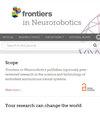On designing a configurable UAV autopilot for unmanned quadrotors
IF 2.6
4区 计算机科学
Q3 COMPUTER SCIENCE, ARTIFICIAL INTELLIGENCE
引用次数: 0
Abstract
Unmanned Aerial Vehicles (UAVs) and quadrotors are being used in an increasing number of applications. The detection and management of forest fires is continually improved by the incorporation of new economical technologies in order to prevent ecological degradation and disasters. Using an inner-outer loop design, this paper discusses an attitude and altitude controller for a quadrotor. As a highly nonlinear system, quadrotor dynamics can be simplified by assuming several assumptions. Quadrotor autopilot is developed using nonlinear feedback linearization technique, LQR, SMC, PD, and PID controllers. Often, these approaches are used to improve control and to reject disturbances. PD-PID controllers are also deployed in the tracking and surveillance of smoke or fire by intelligent algorithms. In this paper, the efficiency using a combined PD-PID controllers with adjustable parameters have been studied. The performance was assessed by simulation using matlab Simulink. The computational study conducted to assess the proposed approach showed that the PD-PID combination presented in this paper yields promising outcomes.关于为无人驾驶四旋翼飞行器设计可配置的 UAV 自动驾驶仪
无人驾驶飞行器(UAV)和四旋翼飞行器的应用越来越广泛。为了防止生态退化和灾难,森林火灾的探测和管理通过采用新的经济技术得到不断改进。本文采用内-外环设计,讨论了四旋翼飞行器的姿态和高度控制器。作为一个高度非线性系统,四旋翼飞行器的动力学可以通过几个假设进行简化。四旋翼飞行器自动驾驶仪的开发采用了非线性反馈线性化技术、LQR、SMC、PD 和 PID 控制器。这些方法通常用于改善控制和抑制干扰。PD-PID 控制器还通过智能算法用于烟雾或火灾的跟踪和监控。本文研究了使用带可调参数的组合 PD-PID 控制器的效率。通过使用 matlab Simulink 进行仿真,对其性能进行了评估。为评估所提出的方法而进行的计算研究表明,本文提出的 PD-PID 组合产生了良好的效果。
本文章由计算机程序翻译,如有差异,请以英文原文为准。
求助全文
约1分钟内获得全文
求助全文
来源期刊

Frontiers in Neurorobotics
COMPUTER SCIENCE, ARTIFICIAL INTELLIGENCER-ROBOTICS
CiteScore
5.20
自引率
6.50%
发文量
250
审稿时长
14 weeks
期刊介绍:
Frontiers in Neurorobotics publishes rigorously peer-reviewed research in the science and technology of embodied autonomous neural systems. Specialty Chief Editors Alois C. Knoll and Florian Röhrbein at the Technische Universität München are supported by an outstanding Editorial Board of international experts. This multidisciplinary open-access journal is at the forefront of disseminating and communicating scientific knowledge and impactful discoveries to researchers, academics and the public worldwide.
Neural systems include brain-inspired algorithms (e.g. connectionist networks), computational models of biological neural networks (e.g. artificial spiking neural nets, large-scale simulations of neural microcircuits) and actual biological systems (e.g. in vivo and in vitro neural nets). The focus of the journal is the embodiment of such neural systems in artificial software and hardware devices, machines, robots or any other form of physical actuation. This also includes prosthetic devices, brain machine interfaces, wearable systems, micro-machines, furniture, home appliances, as well as systems for managing micro and macro infrastructures. Frontiers in Neurorobotics also aims to publish radically new tools and methods to study plasticity and development of autonomous self-learning systems that are capable of acquiring knowledge in an open-ended manner. Models complemented with experimental studies revealing self-organizing principles of embodied neural systems are welcome. Our journal also publishes on the micro and macro engineering and mechatronics of robotic devices driven by neural systems, as well as studies on the impact that such systems will have on our daily life.
 求助内容:
求助内容: 应助结果提醒方式:
应助结果提醒方式:


